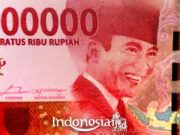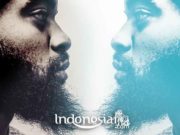Kisar Island is an island that belongs to the territory of Indonesia, located in Maluku. On this island, there are several residents who have European blood, one of which is Ana Siyane Lerrick (32) who looks like a foreigner. Blue eyes, tall body, sharp nose, white skin, and loose blonde hair.
It is striking among the other residents of Kisar Island, the South-South Islands District, Southwest Maluku Regency, Maluku, who generally have dark skin, black eyes and curly hair. Like other Caucasians who live in the tropics, Ana’s skin is sensitive to sunlight. When it’s hot, his eyes get tired and dazzled.
The difference is, Ana’s skin is smooth white without red spots like most Caucasians. “Our family is descended from Europeans who used to live in Kisar,” said Ana at her home in Kota Lama Village. Kisar is a small island just north of the eastern tip of Timor Island. The closest Timor Leste region to Kisar is the Laut District? Ém with the capital city of Lospalos. Ana is the 17th generation of Europeans living in Kisar. It is said that their ancestors were ship crew members who were stranded on the coast of Kiasar Island in the early 16th century.
One of the Kisar Indo-European elders, Ernst Manfred Belder (78), said most of the Europeans who were stranded were soldiers. Most of the rest of the Dutch citizens are from Germany and England. They then married with local residents or other European nations and settled in Kisar.
Another source about the origins of the Indo-European in Kisar comes from the book Die Mestizen auf Kisar (Indo-European descent in Kisar) by German anthropology professor Ernst Rodenwaldt, in 1928. In 1665, Kisar was part of the Banda Province controlled by the Indonesian Trade Association. Dutch East Indies (VOC). To strengthen their territory, the VOC placed soldiers who eventually married the indigenous people of Kisar.
Indo-European descendants in Kisar came from 12 clans, namely Joostensz, Wouthuysen, Caffin, Lerrick, Peelman, Lander, Ruff, Bellmin-Belder, Coenradi, Van Delsen, Schilling, and Bakker. Some of the clans still have their descendants in Kisar, but some are extinct. The Bakker clan is actually a descendant of King Wonreli, Kisar, who married European descent.
Indo-European citizens usually call 11 clans of European descent, without Bakker. Although people of European descent can marry natives, some strongly advocate marriage with fellow European descendants. “The issue of mixed marriage is strictly regulated. In fact, in the previous generation, European descendants were only allowed to marry other European descendants, ”said Fransina Joostensz (54). The effort to maintain the purity of the family’s race was carried out even though they had to marry a brother from one grandfather.
Hans Alvred Kaipatty (26), an Ambonese man who is Ana’s husband, admits the difficulty of having a relationship with Ana. At the beginning of the relationship, Ana’s parents objected very strongly for fear of damaging the purity of their offspring. When permission to have a relationship is obtained, dating is strictly regulated. They can only meet at home, cannot go out of the house freely like dating people.
“After years, our relationship was blessed,” said Hans, who admitted that he had a windfall, he succeeded in marrying Ana. Recording Family relations with people of the same surname in Europe are maintained. The data collection of the “blue eyes” descent is done neatly in the genealogical book of Indo-European descent. In order to be included in the book, every Indo-European descent will be asked to take a photo, the results of which will be sent to the Netherlands.
However, not all descendants can enter the book. They must meet the requirements for the height of the nose, aka the level of sharpness, the shape of the nostrils, the length of the nails, and the color of the eyes. “The most obvious features are nose and eyes. They say cat eyes,” said Ana. Die Mestizen auf Kisar’s book also contains the genealogy of each clan and their descent data that meets the requirements. Ana’s three older brothers are in Die Mestizen auf Kisar, while Ana’s father, who was born in 1954, has yet to load.
Ana, who was photographed in 1997, does not yet know how to contain her photo in the next edition of the genealogy book because the book only exists in the Netherlands. “There is no advantage whatsoever to be included in the genealogy book,” he said. But it can be used to build relationships with families around the world. Merging with residents The settlements of Indo-European descent in Kisar are in Kota Lama Village, an area that during the VOC era became the center of government.
Even though they are physically different, they merge into the Kisar community. The acculturation was one of the reasons reflected in the marriage of Indo-European people who wore kisar tenun, just like the original Kisar people.
Indo-European jobs are the same as other citizens, ranging from farmers, traders, to bureaucrats. The Indo-European citizens of Kisar who migrated outside the island, especially to Kupang, Surabaya, and Jakarta generally became soldiers, police, or bureaucrats. “We are 100 percent Kisar people. Indonesian people. Incidentally, our ancestors were from Europe, ”said Ernst Manfred, whose son married a local resident.
Even though they have married local residents, European surnames are still attached to their children and grandchildren as a marker of the origin of their ancestors. Fernando Richard Rupilu (32), a youth leader in Kisar, said that his Indo-European descent introduced religion, the education system and modern health services to Kisar residents.
But they also continued the social stratification that the Dutch had built long ago in the various social lives of the people in Kisar until now. Apart from white skin and sharp nose, “the blue eyes” from Kisar still feel the same backwardness as other residents of Kisar, a small island on the southern veranda of the archipelago.
Source :kompas
































